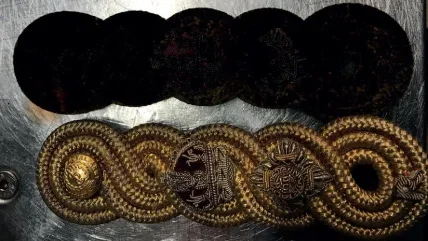
During the worldwide recession of 2007/8 cleaners, including me, watched in despair as customers who had previously brought in their garments every week for cleaning, felt the pinch and changed routine and brought in their clothing once a month instead.
This dramatic downturn made me very concerned. I was guilty of being so busy in the physical work, I failed to plan for events like this. All my expensive machinery, which was new, was sitting virtually idle, unlike the monthly lease/purchase payments which flowed out unabated.
I then had a bit of luck (I have not had much) and someone who had read about our company supplying uniforms in World War One, phoned me up and asked me if I could clean a historic uniform that had suffered serious smoke damage from a warehouse fire for a national museum. The item was very high value and deemed not to be restorable by their insurance company restoration experts,
The uniform arrived and what was once a glorious item belonging to a high-ranking officer in the Second World War, was now a blackened crumpled mess and the gold braid on both epaulettes and the many gold buttons with regimental crest were now totally black with soot.
I will happily admit that the filthy gold braid concerned me. There were multi intertwining strands that the soot smoke had got to: areas that were just not accessible and one break and they would fall apart.
So having thoroughly examined the item, I took it to my favourite bit of equipment, the spotting table, which had all the extras on it such as water/air guns, integral lighting and so on. Ever so gently I played the water jet on each blackened gold strand, using the trigger of the gun to swap from fine water jet to fine air jet. I used a head-mounted magnifying glass to see the details up close.
It took about two hours to get the braid and gold trimmings looking great again and then I hand washed the uniform in soap flakes, fully rinsing until the water was clear.
The results were quite amazing, the customer was stunned and paid very well, and word spread in the military history community and the odd museum that there was someone not afraid to work on historic/rare items.
I realised then that I could do so much more and I put my details and history on military social media sites and this worked a treat as I had vintage uniforms being sent from all over the country. Many were just for simple cleaning as the owner’s local drycleaners either turned the work away as too risky or the uniform’s owner did not trust the drycleaner. Just from working on something different in difficult times my business became the go-to place for militaria collectors UK wide, and we survived the recession.
It shows that however dark things appear, there is always light at the end of the tunnel.






